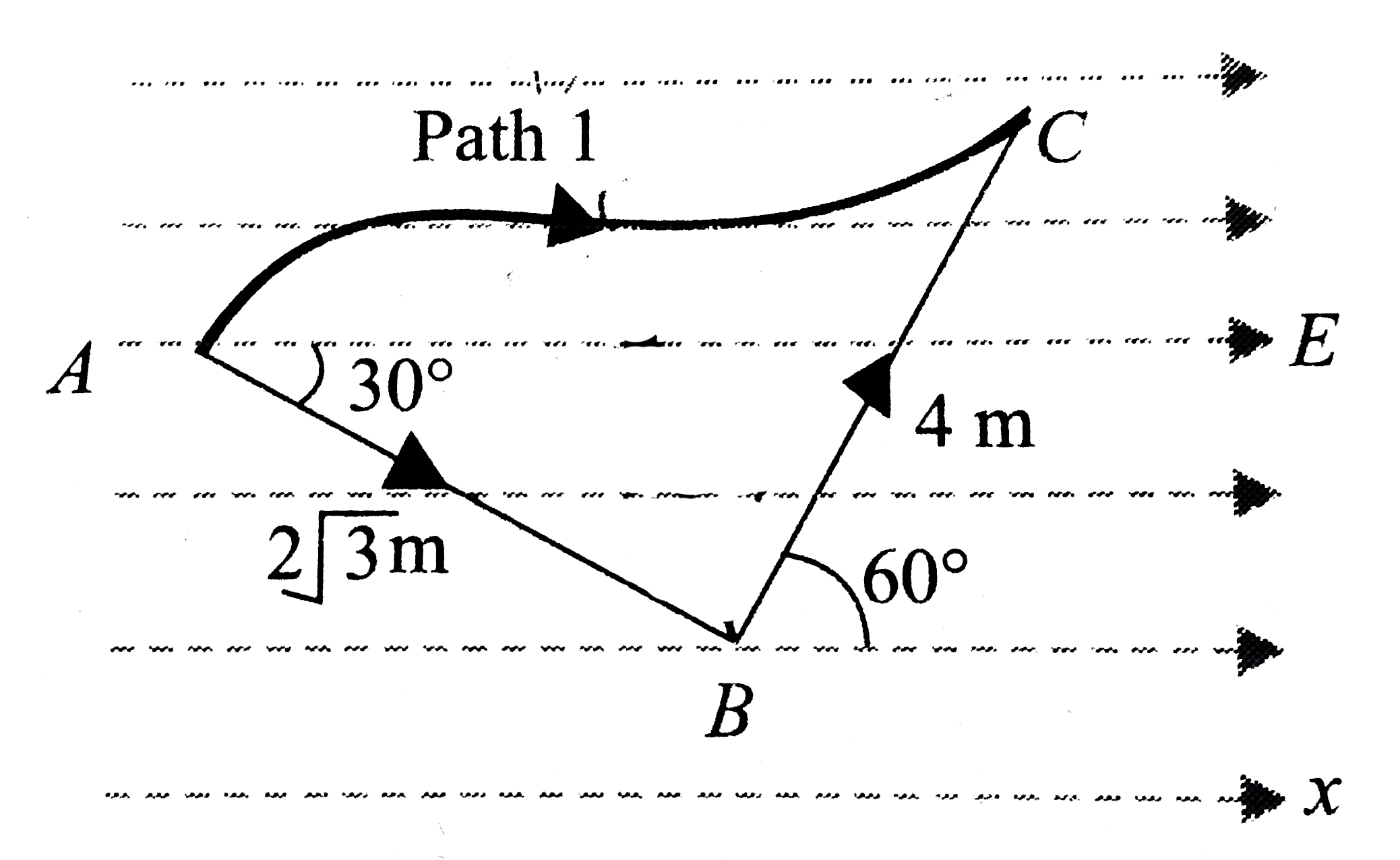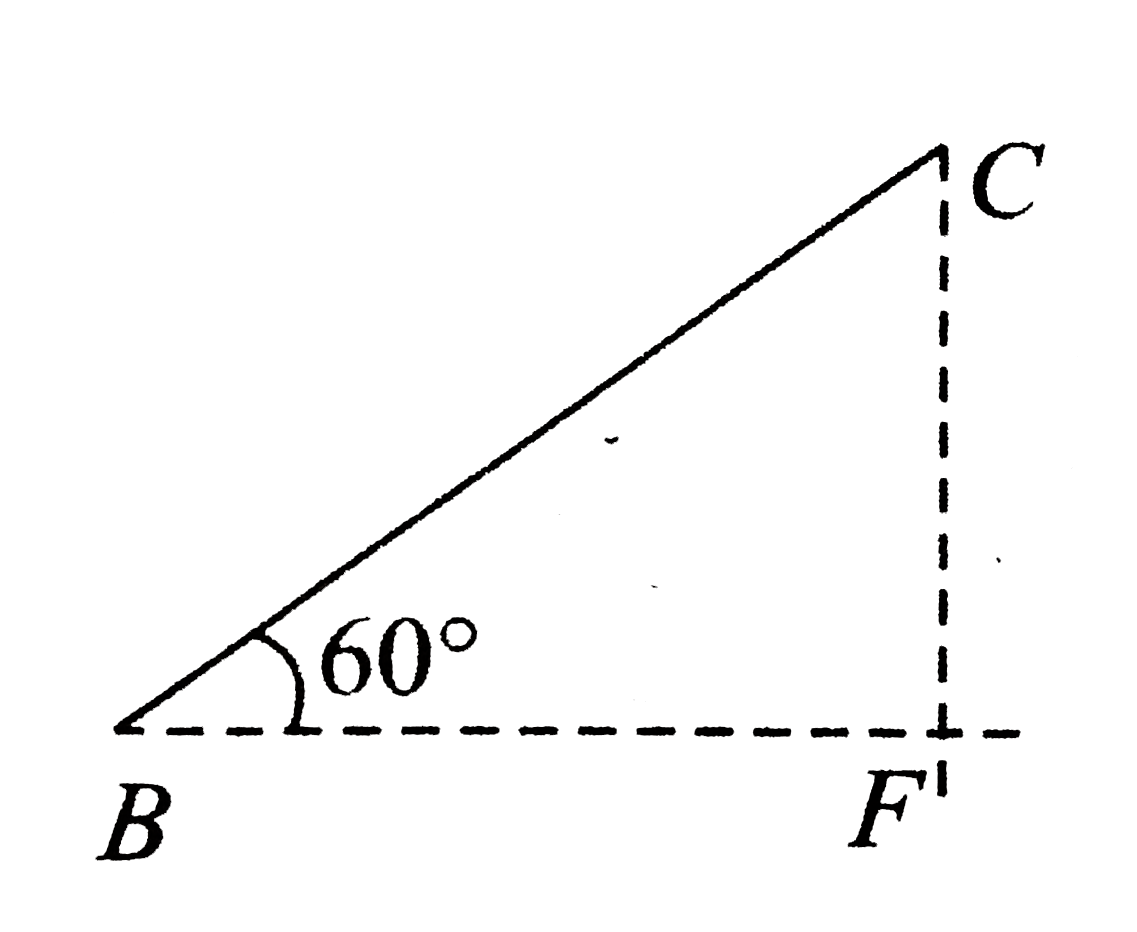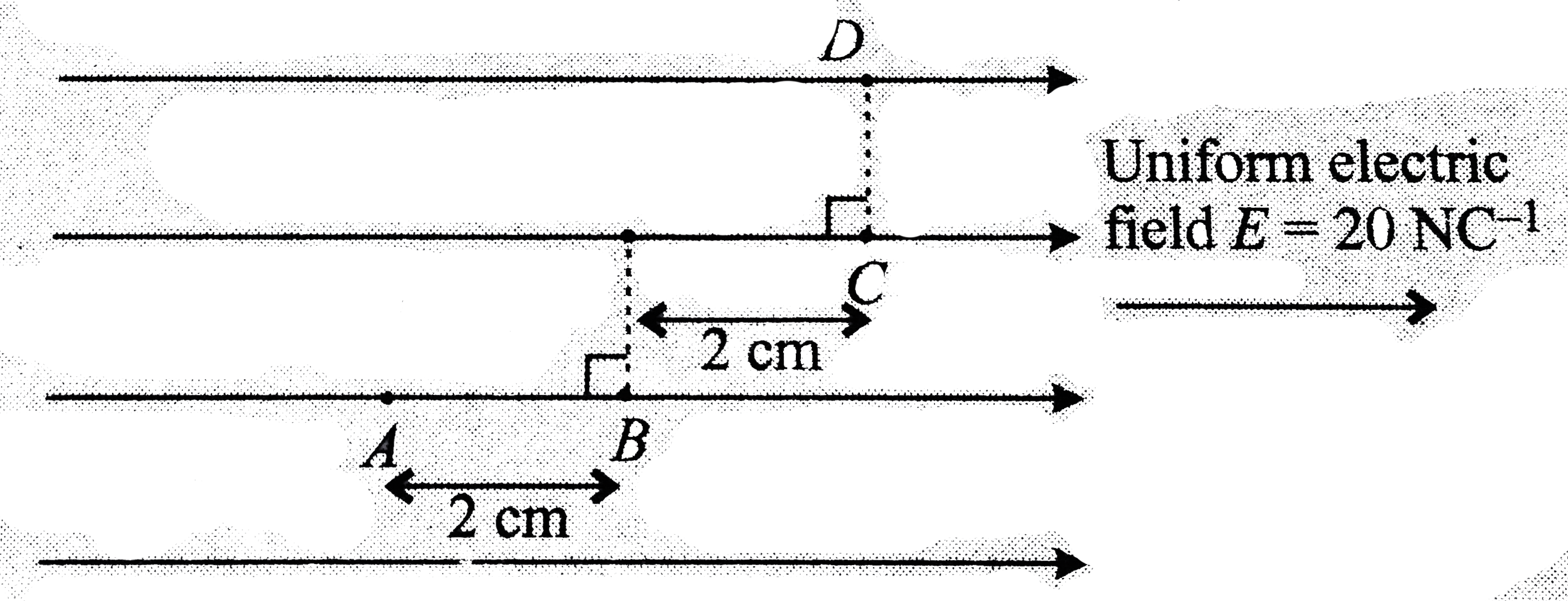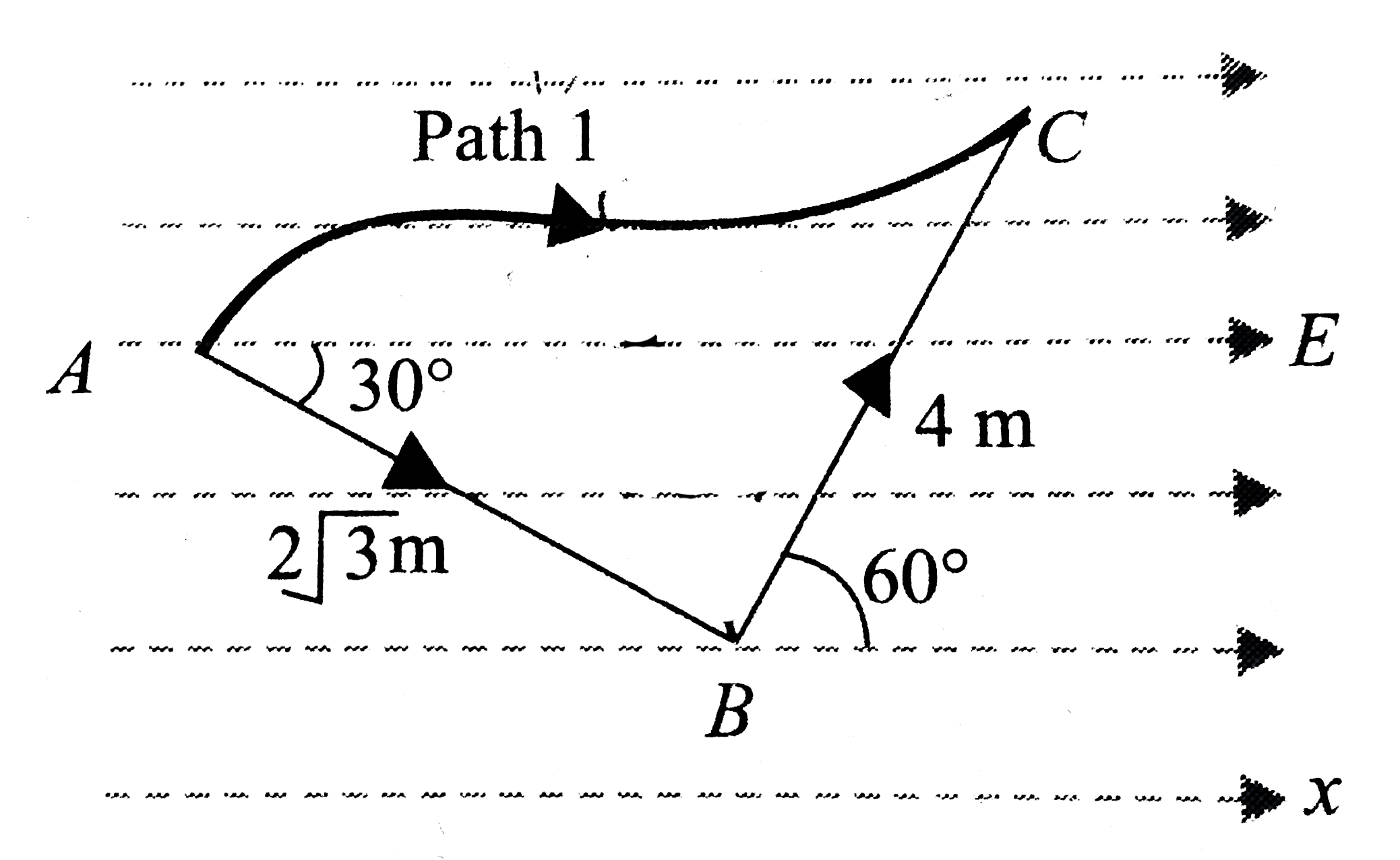In a certain region, electric field E exists along the x - axis which is uniform. Given AB=2√3m and BC=4m. Points A, B, and C are in xy plane.
 .
.
find the potential difference VC−VB between the points CandB.
2 E
3 E
−E
−2E
The correct Answer is:D
VC−VB=VF−VB=−E(BF)
=−E(BC)cos60∘
=−E4×12=−2E
 .
.
Topper's Solved these Questions
- ELECTRIC POTENTIALBOOK - CENGAGE PHYSICS ENGLISHCHAPTER - ELECTRIC POTENTIALEXERCISE - Integer
5 Videos
- ELECTRIC POTENTIALBOOK - CENGAGE PHYSICS ENGLISHCHAPTER - ELECTRIC POTENTIALEXERCISE - DPP 3.1
14 Videos
- ELECTRIC POTENTIALBOOK - CENGAGE PHYSICS ENGLISHCHAPTER - ELECTRIC POTENTIALEXERCISE - Multiple Correct
10 Videos
- ELECTRIC FLUX AND GAUSS LAWBOOK - CENGAGE PHYSICS ENGLISHCHAPTER - ELECTRIC FLUX AND GAUSS LAWEXERCISE - MCQ s
38 Videos
- ELECTRICAL MEASURING INSTRUMENTSBOOK - CENGAGE PHYSICS ENGLISHCHAPTER - ELECTRICAL MEASURING INSTRUMENTSEXERCISE - M.C.Q
2 Videos
Similar Questions
There are 27 drops of a conducting fluid. Each drop has radius r, and each of them is charged to the same potential V1. They are then combined to from a bigger drop. The potential of the bigger drop is V2. Find the ratio V2/V1. Ignore the change in density of the fluid on combining the drops.
View SolutionThere is an electric field E in the x - direction. If the work done by the electric field in moving a charge of 0.2C through a distance of 2m along a line making an angle 60∘ with the x- axis is 4J, then what is the value of E ?
View SolutionA wire having a uniform linear charge density λ is bent in the form of a ring of radius R. Point A as shown in (Fig. 3.145) is in the plane of the ring but not at the center. Two elements of the ring of lengths a1 and a2 subtend very small same angle at point A. they are at distances r1 and r2 from point A, respectively (r2>r1).
 .
.
View SolutionElectric flux through a surface are 10m2 lying in the xy plane is (if→E=ˆi+√2ˆj+√3ˆkN/C)
View SolutionThe measurement of an unknown resistance R is to be carried out using Wheatstone bridge (see Fig. 2(EP).3). Two students perform an experiment in two way. The first student takes R2=10Ω and R1=5Ω. The other student takes R2=1000Ω and R1=500Ω. In the standard arm, both take R3=5Ω. Both find R=R2R1R3=10Ω within errors.
View SolutionA uniform electric field poiting in poistive x-direction exists in a region. Let A be the origin, B be the point on the x-axis at x=+1cm and C be the point on the y-axis at y=+1cm . Then the potentials at the points A, B and C satisfy:
View SolutionIn uniform electric field E=10 N//C , find a. V_A-V_B , b. VB-V_C
View SolutionThe electric field in a certain region is given by E=(5ˆi−3ˆj)kV/m. Find the difference in potential VB−VA. If A is at the origin and point B is at a. (0,0,5)m, b. (4,0,3) m.
View SolutionFind out the following
a. VA−VB
b. VB−VC
c. VC−VA
d. VD−VC
e. VA−VD
f. Arrange the order of potential for points (A, B,C and D).
 .
.
View SolutionIn a certain region, electric field E exists along the x - axis which is uniform. Given B = 2 sqrt(3) m and BC = 4 m . Points A, B, and C are in x y plane. . Find the potential difference V_A - V_B between the points A and B .
View SolutionIn a certain region, electric field E exists along the x - axis which is uniform. Given B = 2 sqrt(3) m and BC = 4 m . Points A, B, and C are in x y plane. . find the potential difference V_C - V_B between the points C and B .
View SolutionIn a certain region, electric field E exists along the x - axis which is uniform. Given B=2√3m and BC=4m. Points A, B, and C are in xy plane.
 .
.
A charged particle q is moved from A to C as shown in path 1. What is the work done by electric field in this process ?
View SolutionAn uniform electric field of strength E exists in a region. An electron of mass m enters a point A perpendicular to x - axis with velocity V . It moves through the electric field and exists at point B . The components of velocity at B are shown in (Fig. 3.156). At B the y - component of velocity remain uncharged. . Find electric field.
View SolutionThree points A,B,C lie in a uniform electric field E of 5xx10^(3) N//C as shown in Fig. Find the potential difference between A and C.
View SolutionThe electric field in a region of space has the components E_(y) = E_(z) =0 and E_(x)= (4.00 N//C)x^(2) . Point A is on the y axis at y = 3.00 m, and point B is on the x axis at x = 4.00 m. What is the potential difference V_(B) - V_(A) ?
View Solution

